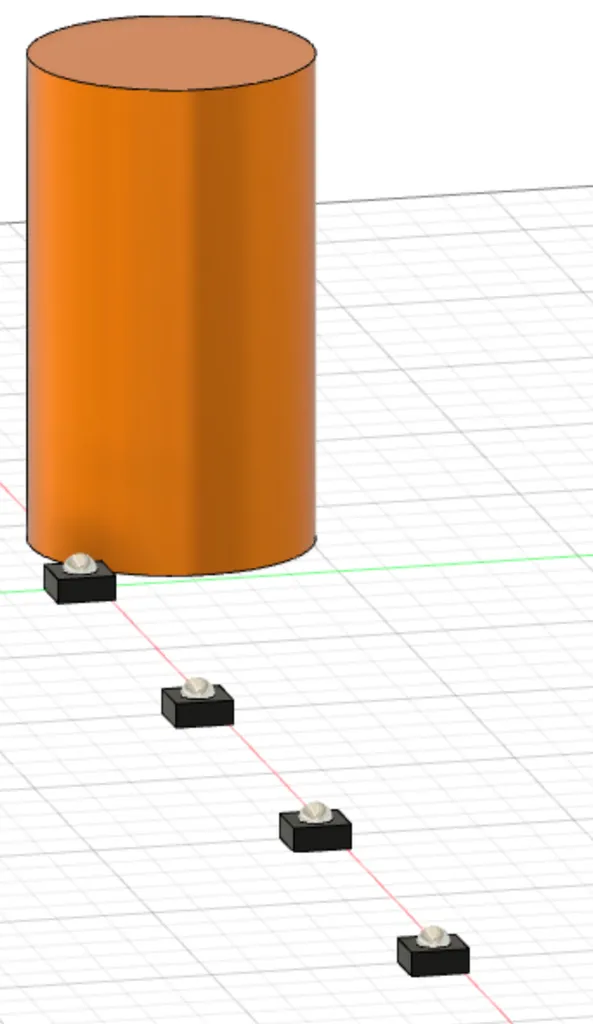- November 08, 2024
- By Ruby Siefken ’26
The whole point of neon-orange traffic cones is to alert drivers to road and utility work and other safety hazards. Yet a University of Maryland student wants to shrink their numbers and size.
Electrical engineering major Matthew Weirich ’25 earned a patent for his design of a traffic “cone” device that contains a miniature computer and wireless communications equipment that digitally transmits information to self-driving vehicles.
The goal: to enhance safety for drivers and construction workers while creating an eco-friendly alternative to traditional traffic cones and barrels. Because the new cones aren’t designed to be seen by people, but by autonomous cars, they don’t need to be as large, and far fewer can do the job.
“As we go into the future and cars are more autonomous and self-driving,” he said, “you don’t need a big cone that the car sees if you just have a little computer on the inside that talks to the car and says, ‘Hey! I’m over here! Don’t come over here!’”

From a young age, Weirich tinkered with cars, airsoft guns and other machines. In his hometown of Cincinnati, Ohio, Weirich passed hundreds of traffic cones while weaving through construction on his drive to high school. One day, he realized the miles-long lines of orange cones and barrels couldn’t possibly be efficient in cost or materials. He began brainstorming a solution to the problem right there behind the wheel.
Traffic cones have been around since 1914, and the first versions were made of concrete (which must have damaged more than a few Ford Model Ts), but today’s use more eco-friendly materials, like recycled plastics. Still, when you consider that they typically are 28 inches high and are placed at least 20 feet apart, that’s still a lot of material. More than 210 million traffic cones were sold in the U.S. in 2022, and that number is expected to climb to 321 million in a decade.
Weirich’s traffic control devices can be programmed to communicate via visual, audible, or electronic output with autonomous vehicle’s command systems, mobile devices and city or new network control centers. When placed in proximity to one another, the devices create a mesh network that informs drivers of obstacles on a broader scale.
This device can be produced in any shape or size, which allows for flexibility in the design and reduced production components.
But when they’ll be needed is uncertain. There’s a joke in the car manufacturing industry, “Autonomous vehicles are always five years away,” and other experts predict they might hit the road by 2035. But semi-autonomous vehicles already available, like Teslas with a self-driving technology called Autopilot, could benefit from Weirich’s design.
After conducting preliminary research and logistics and making product sketches, Weirich brought the idea to his father, David Weirich, a patent attorney for Proctor and Gamble.
The pair began to assemble a detailed description so the younger Weirich could apply for a patent. Weirich submitted his preliminary patent application to the United States Patent and Trademark Office (USPTO) in late 2021. In August, the backed-up office finally granted the patent.
Instead of moving forward to production, Weirich said he’s considering selling his invention to a company with expertise working on autonomous vehicles and related technology.
This wasn’t Weirich’s first patent. During his sophomore year of high school, he started working on fiber optic cable implants for car tires, which alert the driver when the tread is worn out. He’s now awaiting a third patent approval on another project that uses embedded fiber optic technology in the tire’s rims to make cars more visible on busy roads.
He plans to pursue a career as a patent attorney like his father.
“It’s great to see somebody going through the process very similar to what I did,” David Weirich said. “It’s great to see when your kids succeed and are excited about what they’re doing.”
Following graduation, Weirich will work at Finnegan, Henderson, Farabow, Garrett & Dunner, an international intellectual property law firm based in Washington, D.C.—and keep on looking for new opportunities to invent.
“As I spend more time as a patent attorney, hopefully I’ll have hundreds of patents that I wrote and get to see them around every day,” Weirich said.
